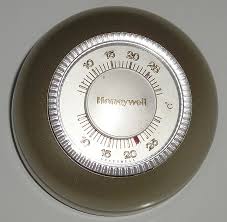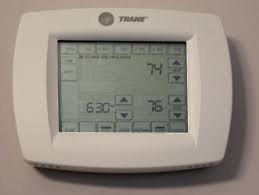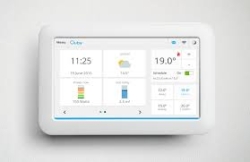Imagine arriving home from work or anywhere else and your favorite room or the entire home is pre-cooled in the summer or pre-warmed in the colder months in anticipation of your arrival. This would not only feel comfortable to the senses, but would certainly save money in comparison to leaving the heat or air conditioning on throughout the day without anyone there. This is possible through use of a smart thermostat. This type of thermostat allows the home occupant to control the home’s temperature throughout the day using a schedule and features that add efficiency, such as sensors and WiFi connectivity.

How does a smart thermostat compare with other types of thermostats? Manual, also known as analog, thermostats are the oldest and simplest type. They are set to one temperature that only changes when the user manually adjusts the temperature setting. Programmable thermostats were introduced in the 1970s and allow the user to set a schedule for different temperatures at different times of the day/night. Most of these programmable thermostats have a “hold” feature that suspends the schedule so it can be used like a manual/analog thermostat. The scheduling feature can be set to warmer or cooler temperatures when the home is unoccupied to save on energy costs, however studies have found that many programmable thermostats actually use more energy due to human error.

Smart thermostats have been around since 2007. Various third party studies have been conducted to determine if smart thermostats save on energy compared to manual and programmable thermostats. One study placed 300 standard programmable thermostats and 300 Nest brand smart thermostats in homes in the same climate (within one region of Indiana). After 1 year, it was found that the smart thermostat users had reduced heating gas consumption by 12.5% compared to a 5% reduction for the programmable thermostat users. Cooling electric consumption went down by 13.9% for smart thermostat users compared to 13.1% for the programmable thermostat users.

Some notable features of smart thermostats include:
Internet Connection
Wi-Fi connectivity gives thermostat access via another internet-connected device, such as a smartphone or laptop, to the user. Some thermostats can even connect to voice command devices. An example is that Google Nest can be connected to Amazon Alexa. A wireless network can be used to sense when an occupant is out of range, called geofencing, thereby determining if they are in, nearby, or out of their home.
Programmed Schedule and Auto Schedule
Smart thermostats have a scheduling feature, but this type of thermostat reduces human error by implementing additional technology. Users can have the programmable schedule, similar to that of a programmable thermostat, by manually creating a custom schedule to reduce energy usage when the occupants are typically away from home. But like with programmable thermostats, this type of schedule can be less energy efficient due to human error. Another option with smart thermostats is the auto schedule feature. This uses algorithms and pattern recognition to create a customized energy-efficient schedule that continues to adapt to home dwellers by continuing to monitor when the building is occupied and thereby updating the schedule as needed. A drawback that some users have commented on is that the interface can be confusing and therefore more training, whether online, in-store, or over the phone, may be needed.
Sensors
Sensors are used to determine whether or not the home is occupied and therefore can suspend cooling or heating when occupants are away. For example, passive infrared (PIR) motion sensors inside the unit sense occupancy in the vicinity of the thermostat. A downside to this type of sensor, however, is that it must be activated by someone walking in front of it. An occupant could be at home and may not pass in front of the sensor, thereby causing the schedule to become off and/or too warm/cold internal temperature. A study showed that a multiple sensor system in a household would significantly save more energy, so this is an area that needs to be worked on rather than just using one sensor.

Zoning
Zoned systems can control individual rooms rather than an entire building for even more energy savings. Advanced smart thermostats can “learn” when each room of a house is normally occupied and thus automatically schedule heating or cooling for that room as needed.
Other Useful Features
Smart thermostats record the time that the HVAC system has been running as well as informing the user of internal/external temperatures. If the air filter needs replacement, the smart thermostat system can also notify the user. Some smart thermostats connect to smart devices such as lights and other appliances for even more convenience and energy savings.
Smart thermostat installation may be free or discounted through local utility companies, such as Portland General Electric, depending on the home’s heating and cooling system. Energy Trust of Oregon is offering a $50 off coupon for purchase toward one of 3 different types of smart thermostats. Users may also receive incentives, such as utility bill discounts, and/or other monetary perks, such as a current $25 sign-up bonus from PGE if you have a heat pump, electric furnace, or central air conditioning, plus $25 for each winter and summer season.
Resources:
PGE – https://www.portlandgeneral.com/residential/energy-savings/thermostats/smart-thermostat-programs
Energy Trust of Oregon – https://www.energytrust.org/incentives/multifamily-smart-thermostat/
Reviews and information on 12 different types of smart thermostats (CNET, May 15, 2019) – https://www.cnet.com/news/smart-thermostat-roundup/





